


Castle Mill is a graduate housing complex of the University of Oxford in Oxford, England.



Castle Mill is a graduate housing complex of the University of Oxford in Oxford, England.
Castle Mill is located north of Oxford railway station along Roger Dudman Way, just to the west of the railway tracks and the Oxford Down Carriage Sidings, on what was formerly Cripley Meadow, south of Port Meadow. [1] The initial buildings at the southern end of the site were completed in 2004. [2] Accommodation is available for single people, couples, and families. [3] Graduate students with children benefit from priority access to lower-cost accommodation, alleviating the over-stretched housing market in Central Oxford. [4]
Facilities at Castle Mill include a common room, launderettes, bicycle racks and an outside barbecue area. The complex is supported by caretakers who live on site. The proximity of the railway causes a noise issue. [5]
The Castle Mill Stream, a branch of the River Thames, runs to the east of the site beyond the railway tracks, hence the name. From Castle Mill there are views of the railway lines to the East, and allotments and Port Meadow to the West.




In 2010, Oxford City Council capped the number of students that Oxford University and Oxford Brookes University were permitted to have in private rented housing to 3,000 each. The Council was encouraged by local lobbies such as the East Oxford Residents Forum to use planning permission as an enforcement mechanism. If either University breached the cap, the Council threatened to prevent new buildings from being occupied. As a consequence of these restrictions, the Universities looked to develop sites for student accommodation in partnership with commercial providers. [9]
Since 2012, the Oxford University Estates Directorate, with the help of Longcross, have been developing the one hectare Castle Mill brown field site (400m × 25m), north of the existing accommodation, between the Cripley Meadow Allotments and the railway tracks, close to the southern end of Port Meadow, to meet the need for graduate places. [10] [11]
The development has been controversial, since the four to five storey blocks overlook Port Meadow, an historic open area to the north with views of some of Oxford's skyline. [12] Campaigners warned of damage to views of Oxford. [13] [14] There was an online petition [15] and a "Save Port Meadow" campaign was established in December 2012. [16] Concern was raised by the Oxford Preservation Trust, [17] Layla Moran MP, the Liberal Democrats, [18] and Green Party. [19] Some members of Oxford University expressed anger. [20] The development has been likened by a critic to building a "skyscraper beside Stonehenge". [21]
In February 2013, a local newspaper reported that Oxford City Council had entered negotiations with Oxford University to reduce the height of the buildings by two storeys. [22] There was a protest and picket of Congregation, the University's formal assembly of senior members, at the Sheldonian Theatre in central Oxford. [23] [24] The protesters including members of the University, such as Diarmaid MacCulloch, Professor of the History of the Church and TV historian. Oxford University donors, such as Michael Moritz, and the University's Vice-Chancellor, Prof. Andrew Hamilton, were also targeted with letters by the protesters, warning that the buildings "blot out the unique view of Oxford's Dreaming Spires from Port Meadow". [23] Campaigners claimed that the decision on the development was unlawful. [7] The author Philip Pullman condemned the buildings; [25] this was featured in the national press. [26]
In particular, views of the Grade I listed Italianate St Barnabas Church in Jericho have been affected. An internal report of 24 January 2012 at Oxford City Council [27] stated "Photomontages show that from some parts of the meadow the view of the St Barnabas campanile will be obscured with the long unrelieved roof line cutting across in front of it." (See photograph to the right.)
In March 2013, it was revealed that Oxford City Council was warned about the threat to the views from Port Meadow. [8] The Head of Heritage at the Council reported on "the harmful impact", concluding that "There is no justification for this harm". [27] The University submitted revised plans reducing the height of the blocks by 1.2m on 9 February 2012, yet the planning officer's report recommending approval of the revised scheme was dated 3 February 2012. [8] The height change is seen by some as having a negligible effect in practice. [6] The Vice-Chairman of the West Area Planning Committee said "I was told there had been no objections to the original scheme and as the revised scheme was designed to make it even less controversial there was no need to consult." [28]
In April 2013, it was reported that Oxford University had removed the topmost apex of the roof in its revised plans, rather than removing a storey. [29] The University stated that it would not reduce the height of the buildings voluntarily and had estimated the cost of doing so as £10–20 million. [30] [31] On 17 April, masked protesters attended an Oxford City Council meeting, where it was decided that a high-level meeting between the University's Vice-Chancellor and the Council leader was needed. [32] [33] The City Council warned the University that compulsory measures could be taken to reduce the impact of Castle Mill. [34] Campaigners set up a fund to oppose the development in the High Court. The Director of the Oxford Preservation Trust has said, "I don't think we have the guidelines in place which allow for a development like the one near Port Meadow to be properly assessed." [35]
During May 2013, it emerged that pollution at Castle Mill had not been checked before work began, as was required in the planning permission. [36] The CPRE stated that a request under the Freedom of Information Act revealed that the University did not provide the necessary information before work started in September 2012. When the University did eventually undertake the assessment, it was deemed adequate by the City Council officers, but a judgement of the matter by the Council itself was postponed. Later in May, a University alumnus said that he had been lobbied by the Provost of Worcester College, Professor Jonathan Bate, because the College was objecting to a modest planning proposal by Exeter College. [37]
In June 2013, Castle Mill was one of six buildings nominated for the 2013 Carbuncle Cup, an annual award by Building Design for "the ugliest building in the United Kingdom completed in the last 12 months. It is described as "a deeply unimaginative and impoverished design which would lower the spirits whatever its setting, but on the edge of one of central England's most important and ancient landscapes, it is an outrage."
In July 2013, an independent inquiry into the student blocks and how the University was allowed to obscure historic views of Oxford was announced. [38] The level of consultation and the relationship between Oxford city planners and Oxford University have been questioned. There have been claims that city councillors were misled about the impact of the scheme.
Two years on, the controversy continued, with several Oxford academics still in public opposition. [39] October 2014 was the second anniversary of the issue, still raising anger from local campaigners, with a retrospective environmental impact assessment in progress. [40]
In February 2015, almost exactly three years after Oxford City Council approved the scheme, academics and staff who are members of the university's Congregation – effectively its parliament – debated a binding motion to reduce the height of six of Castle Mill's eight blocks to reduce the development's visual impact. The proposal was defeated by 536 votes to 210. The University's Student Union campaigned against the motion on the grounds that it would have an adverse impact on graduate student housing and finance. A subsequent postal vote, triggered by critics of Castle Mill, rejected the proposal to reduce the height of six blocks by 1,698 to 460. In response to the two votes, Oxford University stated that it would pursue its favoured option, screening the student flats with trees and new cladding at an approximate cost of £6m. [41] [42] The plans were approved by Oxford City Council in 2017. [43]
As of 2020 [update] , changes have been made including painting with a less bright shade and installation of some green walls. [44]
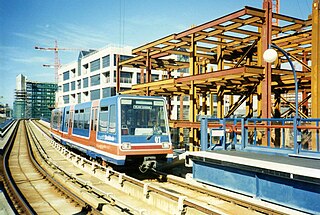
The London Docklands Development Corporation (LDDC) was a quango agency set up by the UK Government in 1981 to regenerate the depressed Docklands area of east London. During its seventeen-year existence it was responsible for regenerating an area of 8.5 square miles (22 km2) in the London Boroughs of Newham, Tower Hamlets and Southwark. LDDC helped to create Canary Wharf, Surrey Quays shopping centre, London City Airport, ExCeL Exhibition Centre, London Arena and the Docklands Light Railway, bringing more than 120,000 new jobs to the Docklands and making the area highly sought after for housing. Although initially fiercely resisted by local councils and residents, today it is generally regarded as having been a success and is now used as an exemplar of large-scale regeneration, although tensions between older and more recent residents remain.
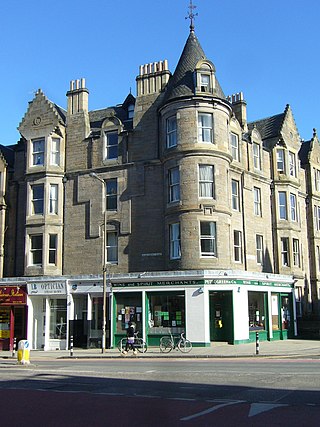
Marchmont is a mainly residential area of Edinburgh, Scotland. It lies roughly one mile to the south of the Old Town, separated from it by The Meadows and Bruntsfield Links. To the west it is bounded by Bruntsfield; to the south-southwest by Greenhill and then Morningside; to the south-southeast by The Grange; and to the east by Sciennes.

Wolvercote is a village that is part of the City of Oxford, England. It is about 3 miles (5 km) northwest of the city centre, on the northern edge of Wolvercote Common, which is itself north of Port Meadow and adjoins the River Thames.

Port Meadow is a large meadow of open common land beside the River Thames to the north and west of Oxford, England.
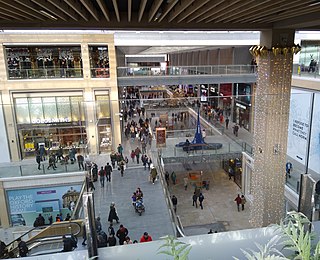
Westgate Oxford is a major shopping centre in Oxford city centre, England, that was extensively remodelled and extended between 2016 and 2017.

Walton Street is on the eastern edge of the Jericho district of central Oxford, England.

Brighton Marina is an artificial marina in Brighton, England. It features a working harbour and residential housing alongside a variety of leisure, retail and commercial activities. The construction of the marina itself took place between 1971 and 1979, although developments within it have continued ever since. The marina covers an area of approximately 127 acres (0.51 km2).
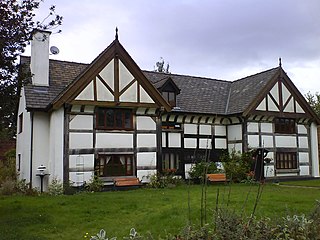
Kersal is a suburb and district of Salford in Greater Manchester, England, 3 miles (4.8 km) northwest of Manchester and was historically part of the county of Lancashire.
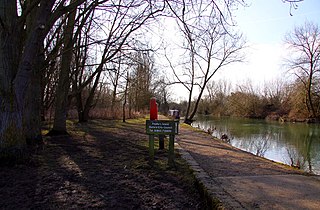
Fiddler's Island is an island in the River Thames at Oxford in England. It is situated south of Port Meadow on the reach above Osney Lock.

Castle Mill Stream is a backwater of the River Thames in the west of Oxford, England. It is 5.5 km long.

The architecture of Leeds, a city and metropolitan borough in West Yorkshire, England, encompasses a wide range of architectural styles and notable buildings. As with most northern industrial centres, much of Leeds' prominent architecture is of the Victorian era. However, the City of Leeds also contains buildings from as early as the Middle Ages such as Kirkstall Abbey, one of Britain's best preserved ruined Cistercian monasteries, as well as examples of 20th century industrial architecture, particularly in the districts of Hunslet and Holbeck.

The University of Nottingham is a public research university in Nottingham, England. It was founded as University College Nottingham in 1881, and was granted a royal charter in 1948. The University of Nottingham belongs to the research intensive Russell Group association.

The Radcliffe Observatory Quarter (ROQ) is a major University of Oxford development project in Oxford, England, in the estate of the old Radcliffe Infirmary hospital. The site, covering 10 acres is in central north Oxford. It is bounded by Observatory Street and Green Templeton College to the north, the Woodstock Road to the east, Somerville College to the south, and Walton Street to the west. The project and the new university area is named after the grade I listed Radcliffe Observatory to the north east of the site, now the centrepiece of Green Templeton College, which is intended to form the visual centrepiece of the project.
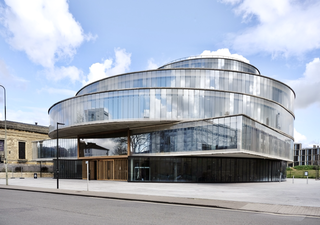
The Blavatnik School of Government is a school of public policy founded in 2010 at the University of Oxford in England. The School was founded following a £75 million donation from a business magnate Len Blavatnik, supported by £26 million from the University of Oxford. It is part of Oxford's Social Sciences Division, which aims to train current and future leaders in the practice of government.

The Millennium Mills is a derelict turn of the 20th century flour mill in West Silvertown on the south side of the Royal Victoria Dock, between the Thames Barrier and the ExCeL London exhibition centre alongside the newly built Britannia village, in Newham, London, England. The Mills are currently undergoing a major renovation as part of a £3.5billion redevelopment of Silvertown.

Cripley Meadow lies between the Castle Mill Stream, a backwater of the River Thames, and the Cotswold Line railway to the east, and Fiddler's Island, on the main branch of the Thames to the west, in Oxford, England. It is to the south of the better known Port Meadow, a large meadow of common land. To the south is Sheepwash Channel which connects the Oxford Canal with the River Thames.
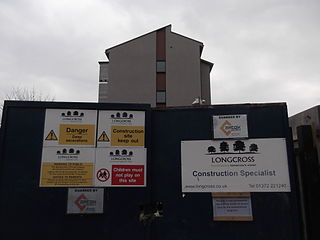
Longcross was a British construction company which entered into administration in June 2015. The head office was based in Ashtead, Surrey, England.

Broad Walk is a wide walkway running east–west on the north side of Christ Church Meadow and south of Merton Field in central Oxford, England.

Poplar Walk is wide footpath running north–south in Christ Church Meadow, Oxford, England.
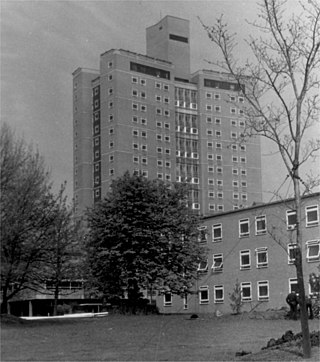
The Fallowfield Campus is the main residential campus of the University of Manchester. It is located in Fallowfield, Manchester, 2 miles (3 km) south of the main university site, to which it is connected by Wilmslow Road and the A34.
30 x 2-Bed Flats – available as a priority to couples with children